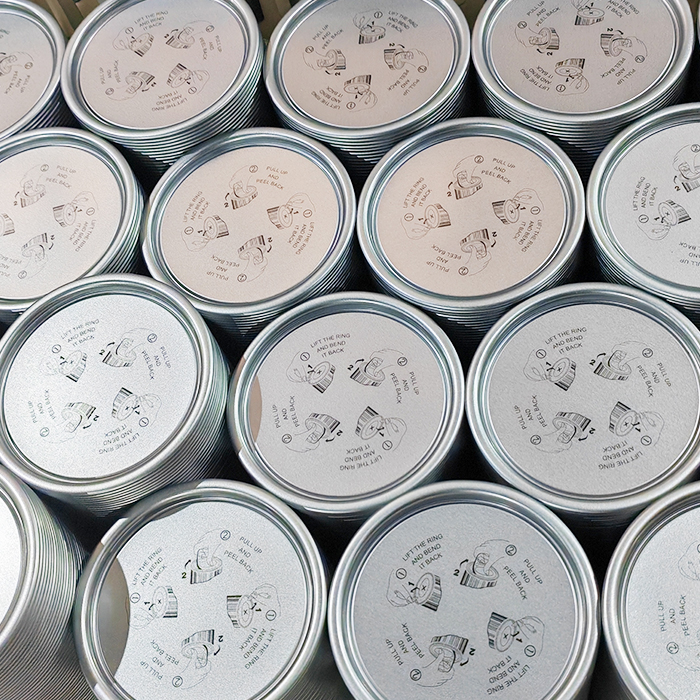
Tinplate lid
Canned food
Canned vegetables: such as green beans, corn, carrots, etc., tin cans can effectively protect the freshness and nutritional content of vegetables.
Canned fruits: such as peaches, pears, pineapples, etc. Tin cans can prevent fruits from oxidizing and spoiling.
Canned meat: such as luncheon meat, ham, beef, etc., tin cans can extend the shelf life of meat and maintain its flavor.
Canned fish: such as tuna and sardine, tin cans can effectively prevent fish corruption and odor.
Tinplate packaging cans (tin-coated steel cans) are highly popular in the packaging of food, beverages, and other products, primarily due to their numerous significant advantages. Below are the main benefits of tinplate packaging cans:
Tinplate packaging cans (tin-coated steel cans) are highly popular in the packaging of food, beverages, and other products, primarily due to their numerous significant advantages. Below are the main benefits of tinplate packaging cans:
1. Excellent Corrosion Resistance
· Tin Coating Protection: The surface of tinplate is coated with a layer of tin, which effectively prevents the metal from coming into contact with corrosive substances in food or the environment, thereby extending the packaging's lifespan.
· Suitable for Various Foods: Whether acidic, alkaline, or high-salt foods, tinplate cans provide excellent protection.
2. High Strength and Durability
· Impact Resistance: Tinplate cans can withstand physical impacts during transportation and storage, reducing the risk of damage.
· Pressure Resistance: Suitable for foods requiring high-pressure sterilization, such as canned goods.
3. Excellent Sealability
· Airtightness: Tinplate cans can be completely sealed, preventing air, moisture, and contaminants from entering, thus preserving the freshness and flavor of the food.
· Extended Shelf Life: The superior sealability significantly extends the shelf life of food, making it ideal for long-term storage.
4. Good Processability
· Easy to Form: Tinplate is easy to stamp, stretch, and shape, making it suitable for various packaging needs in different shapes and sizes.
· Excellent Printability: The surface is suitable for high-quality printing, enhancing the product's appearance and brand image.
5. Eco-Friendliness and Recyclability
· Recyclable: Tinplate cans can be recycled multiple times, reducing resource waste and environmental pollution.
· Energy Efficiency: Recycling tinplate is more energy-efficient than producing new materials, aligning with sustainable development goals.
6. Food Safety
· Food-Grade Coatings: The inner walls can be coated with food-grade coatings to prevent reactions between the metal and food, ensuring safety.
· Non-Toxic: Tinplate cans do not release harmful substances, guaranteeing food safety.
7. Versatility
· Wide Range of Applications: Suitable for various products, including food, beverages, chemicals, and cosmetics.
· Diverse Designs: Can be designed in different shapes, sizes, and opening methods to meet various packaging needs.
8. Cost-Effectiveness
· Long-Term Preservation: Extends the shelf life of food, reducing waste and lowering long-term costs.
· Transportation Safety: High strength and durability minimize damage during transportation, reducing logistics costs.
9. Enhanced Brand Image
· High-Quality Appearance: Tinplate cans have a premium appearance, elevating the product's image.
· Customizable Designs: Personalized designs can be achieved through printing and shaping, enhancing brand recognition.
In summary, tinplate packaging cans occupy an important position in the packaging industry due to their corrosion resistance, high strength, excellent sealability, eco-friendliness, and versatility, making them widely applicable across various fields.




